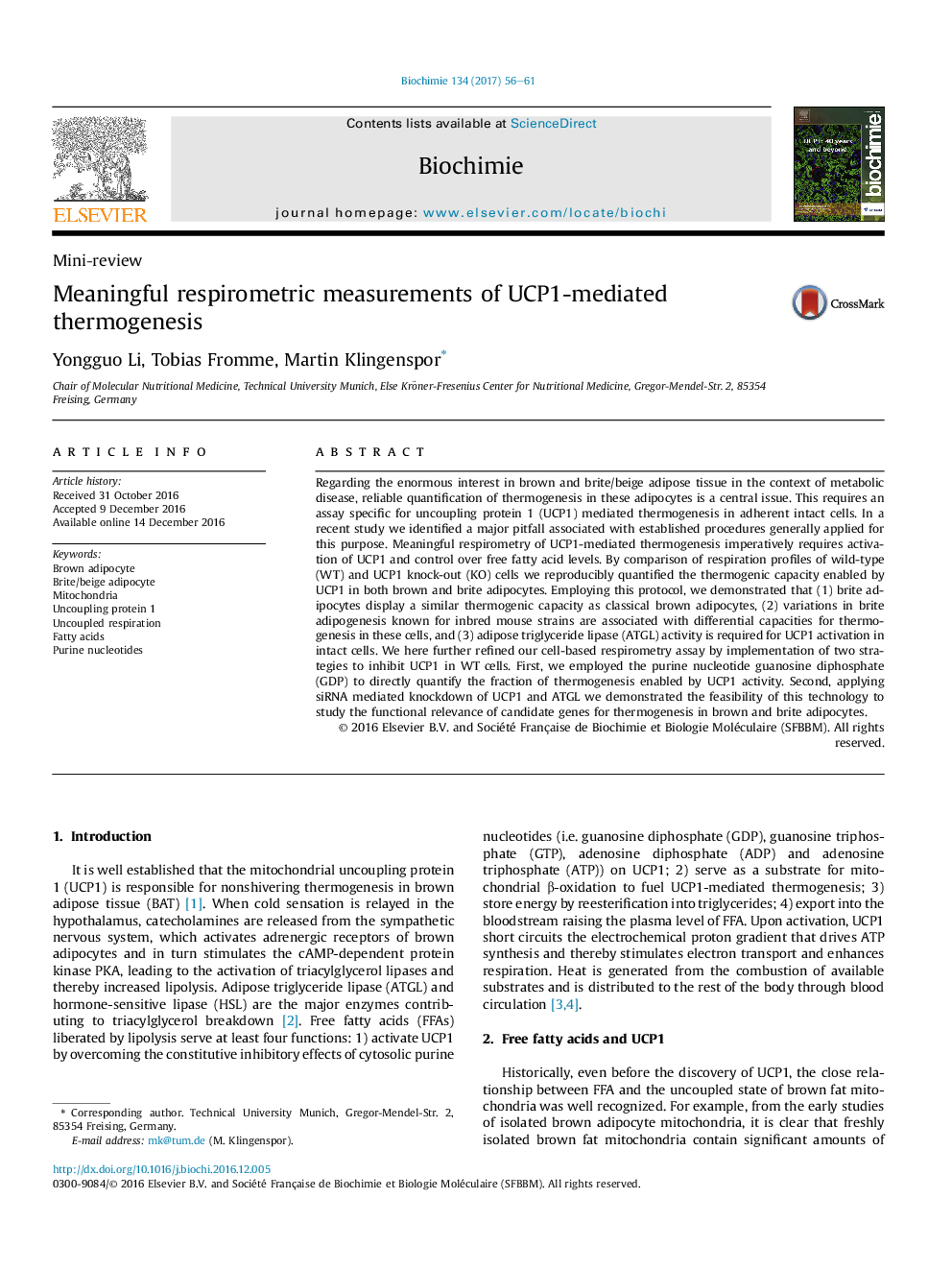| Article ID | Journal | Published Year | Pages | File Type |
|---|---|---|---|---|
| 5509128 | Biochimie | 2017 | 6 Pages |
Abstract
Regarding the enormous interest in brown and brite/beige adipose tissue in the context of metabolic disease, reliable quantification of thermogenesis in these adipocytes is a central issue. This requires an assay specific for uncoupling protein 1 (UCP1) mediated thermogenesis in adherent intact cells. In a recent study we identified a major pitfall associated with established procedures generally applied for this purpose. Meaningful respirometry of UCP1-mediated thermogenesis imperatively requires activation of UCP1 and control over free fatty acid levels. By comparison of respiration profiles of wild-type (WT) and UCP1 knock-out (KO) cells we reproducibly quantified the thermogenic capacity enabled by UCP1 in both brown and brite adipocytes. Employing this protocol, we demonstrated that (1) brite adipocytes display a similar thermogenic capacity as classical brown adipocytes, (2) variations in brite adipogenesis known for inbred mouse strains are associated with differential capacities for thermogenesis in these cells, and (3) adipose triglyceride lipase (ATGL) activity is required for UCP1 activation in intact cells. We here further refined our cell-based respirometry assay by implementation of two strategies to inhibit UCP1 in WT cells. First, we employed the purine nucleotide guanosine diphosphate (GDP) to directly quantify the fraction of thermogenesis enabled by UCP1 activity. Second, applying siRNA mediated knockdown of UCP1 and ATGL we demonstrated the feasibility of this technology to study the functional relevance of candidate genes for thermogenesis in brown and brite adipocytes.
Related Topics
Life Sciences
Biochemistry, Genetics and Molecular Biology
Biochemistry
Authors
Yongguo Li, Tobias Fromme, Martin Klingenspor,
